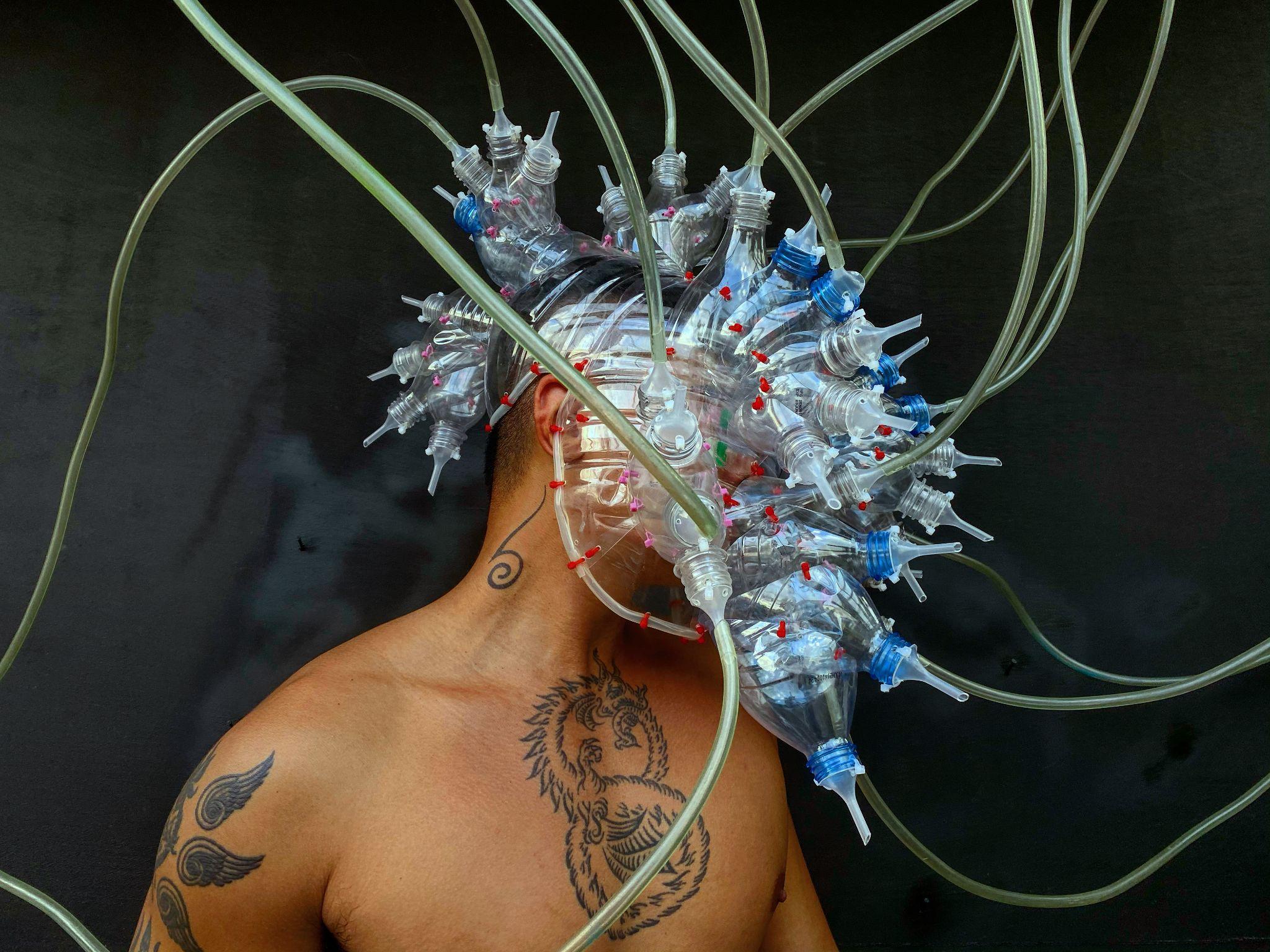Growing up in General Santos — a fishing and agricultural city on Mindanao Island in the Philippines — Leeroy New hardly ever saw people throw things away. Waste items would always be salvaged and repurposed. Even ordinary plastic bottles would become elaborate Christmas decor. When he became an artist, it was only natural to reject conventional art materials in favour of waste and recycled ordinary objects.

New rose to prominence in 2011 after designing Lady Gaga’s muscle dress’, an innovative sculpted silicone outfit. About three years later, he embarked on his Aliens of Manila series, for which he transformed plastic zip ties, funnels, scrub sponges and colourful colanders, among other materials, into psychedelic wearable sculptures. To bring the sci fi-inspired costumes to life, he enlisted performers to roam the streets of Manila, Taipei, Toronto and New York clad in his futuristic creations. The series made a bold statement about the global problem of plastic waste to a large audience outside the confines of an art gallery.
New is among a growing number of artists spotlighting urgent issues like plastic pollution, overflowing landfills and climate change, many of whom, like New, hail from Asia and are telling stories from their own contexts. Some see it as a social responsibility. ‘Art has the capacity to bypass intellectual defences and connect with the viewer on an emotional level,’ says Indian artist Vibha Galhotra. ‘It can act as a mirror, reflecting our collective impact on the earth.’

Recently, Galhotra created an apocalyptic film, Un(promised), shot across India, Israel, Palestine and Jordan. The film follows a nomadic figure clad in a red hazmat suit. ‘This character traverses barren, devastated landscapes, searching in vain for signs of life or a patch of fertile ground. Their journey is a meditation on our collective estrangement from the earth — an act of searching for what we’ve lost due to our exploitation of nature,’ says Galhotra. The work illustrates how humanity is recklessly hurtling towards a bleak future, but without pointing fingers.

Other artists are using their bodies to stage visceral land art performances, such as Singaporean artist Jason Lim, whose work explores humankind’s primal connection with nature. For Duet with Thread (Red), he shrouded his head in a tangle of red thread and lay on the grass outdoors face down with the wispy threads from his head enveloping a mossy rock. The resulting photograph suggests his body was almost growing out of the landscape.


That year, he also walked down a bustling street in Singapore, balancing a large rock on his head. His precarious performance epitomises the work of fellow environmentally concerned artists: delicately balancing the weight of ecological issues with aesthetic concerns, they’re finding creative ways to inspire change across the region and beyond.






